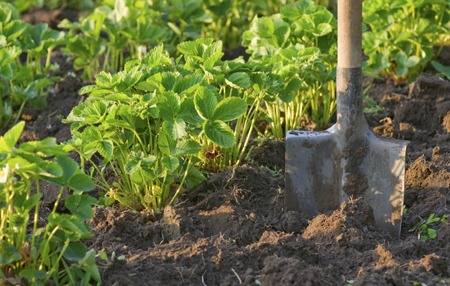By Judy English
For the Sequim Gazette
Soil supplies 13 essential nutrients to plants. Soil nutrients are classified as primary, secondary or micronutrients. The most common nutrient deficiencies are in the primary nutrients, nitrogen (N), phosphorous (P) and potassium (K).
These three are “primary” nutrients because they are in the highest demand by plants.
Soil particles, electrical charges and nutrients. Soil particles carry electrical charges, called ions. Ions with a positive charge are “cations” and those with a negative charge are “anions.” Just like opposite ends of a magnet attract each other, a positive cation is attracted to a negative anion – the cation is absorbed by the anion.
Sand particles are too large to carry electrical charges but clay and humus particles are smaller and carry negatively charged anions that attract cations. Cations absorbed by clay and humus include calcium, potassium, sodium, magnesium, iron, ammonium and hydrogen – all major plant nutrients.
Soil anions are repelled by the negative charge on clay and humus particles and stay in solution rather than being absorbed.
Anions include chloride, nitrate, sulfate and phosphate, also plant nutrients. Because these nutrients stay in solution and are easily leached away, they are often low or missing from garden soil.
How do plants access nutrients in the soil? Root hairs have their own electrical charge and they exchange their cation for a cation attached to soil particles. The root hair exchanges a hydrogen cation for every cation nutrient of calcium, potassium, sodium, magnesium, iron, ammonium and hydrogen absorbed. This exchange of cations is how the plant “eats.”
The number of exchange sites in soil measures the capacity of soil to hold nutrients needed by plants. This capacity is called “Cation Exchange Capability” or CEC. Clay and organic particles in soil impart a high CEC to soil because more nutrients can be stored in the soil.
Too much clay, however, can decrease essential air spaces resulting in poor drainage.
What is soil pH? Simply said, pH is a way to measure liquids to determine if they are acid or alkaline. The pH range is from 0 to 14. A lot of hydrogen ions makes a solution acidic (low pH). Relatively few hydrogen ions results in a solution that is alkaline (high pH).
When a plant exchanges a hydrogen cation for a nutrient cation, the concentration of hydrogen ions in the solution increases. As the hydrogen concentration increases, the pH decreases and the soil becomes more acidic.
The soil pH created by the nutrient-ion exchange influences what types of micro-organisms live in the soil. Soil pH influences plant growth by affecting the availability of plant nutrients and affecting the activity of soil micro-organisms which in turn affect nutrient cycling.
Do a soil test so you know the pH of your soil. Many vegetable garden crops prefer a pH of 5.5 to 7.5, more in the middle of the pH range. Blueberries and rhododendrons are more adapted to acid soils (low pH, high number of nitrogen ions). Wetter soils usually are more acidic.
The pH level can be adjusted: adding lime or wood ash will increase the pH of soil; adding sulfur will decrease the pH of soil. How much adjustment is appropriate is determined in a soil test.
Coming next week: “Understanding garden soil, Part III: The fertilizers.”
Judy English is a Washington State University-certified Clallam County Master Gardener.



